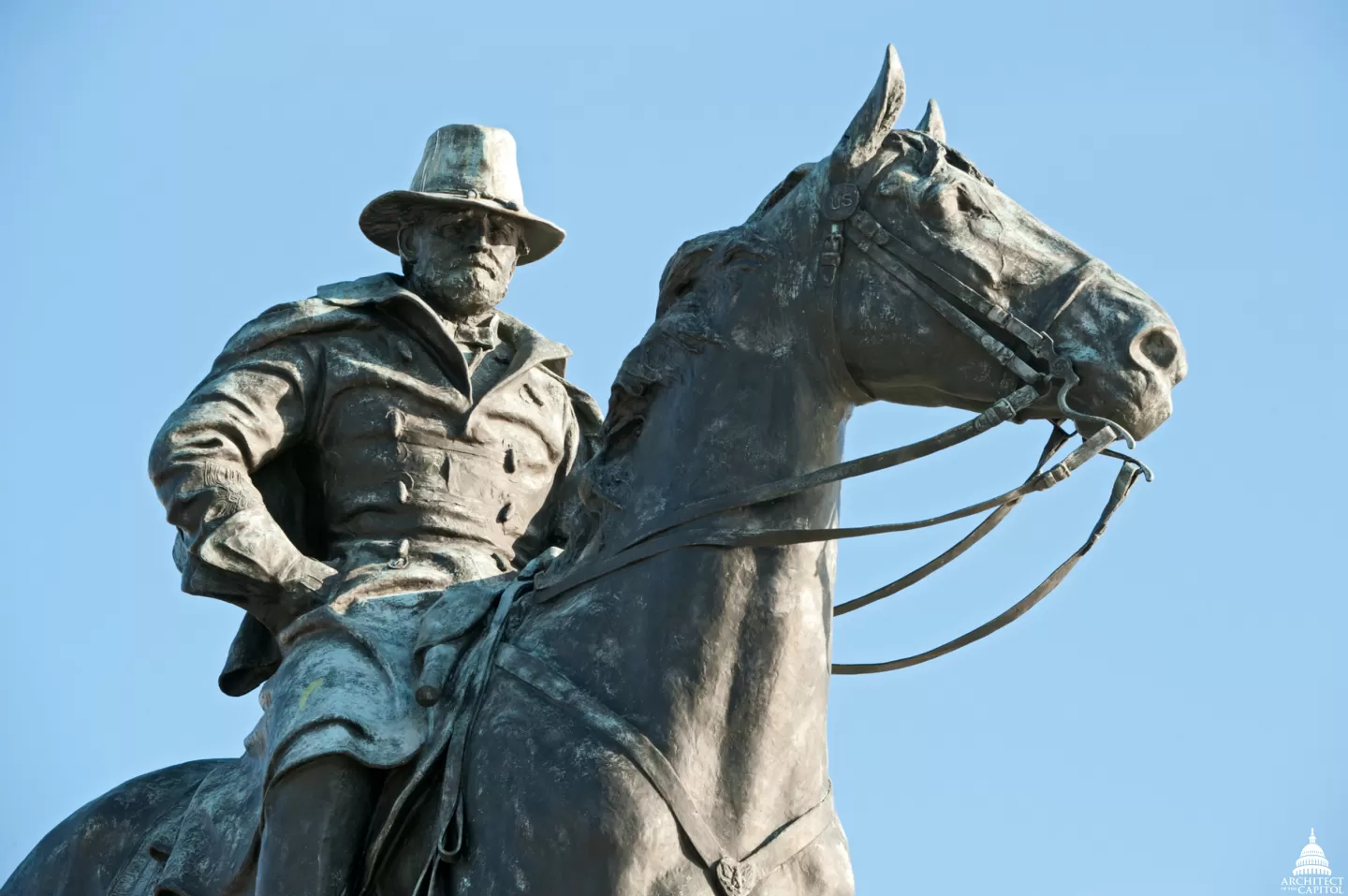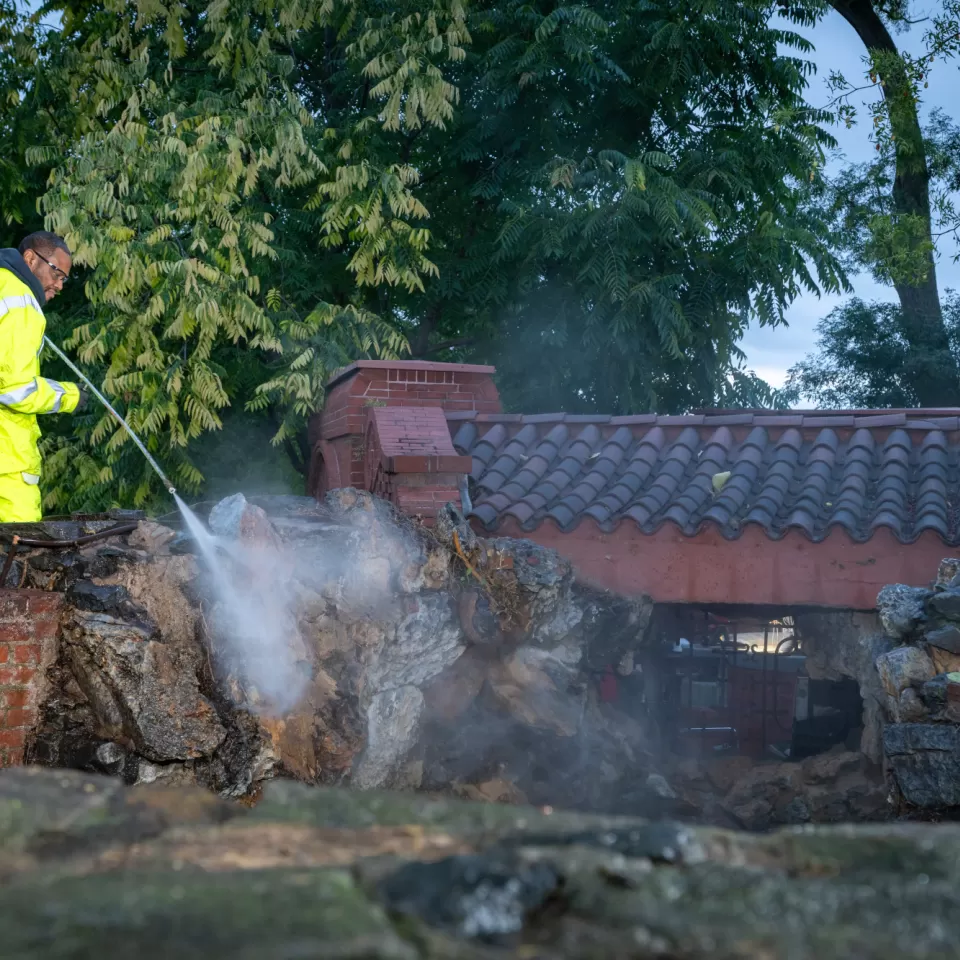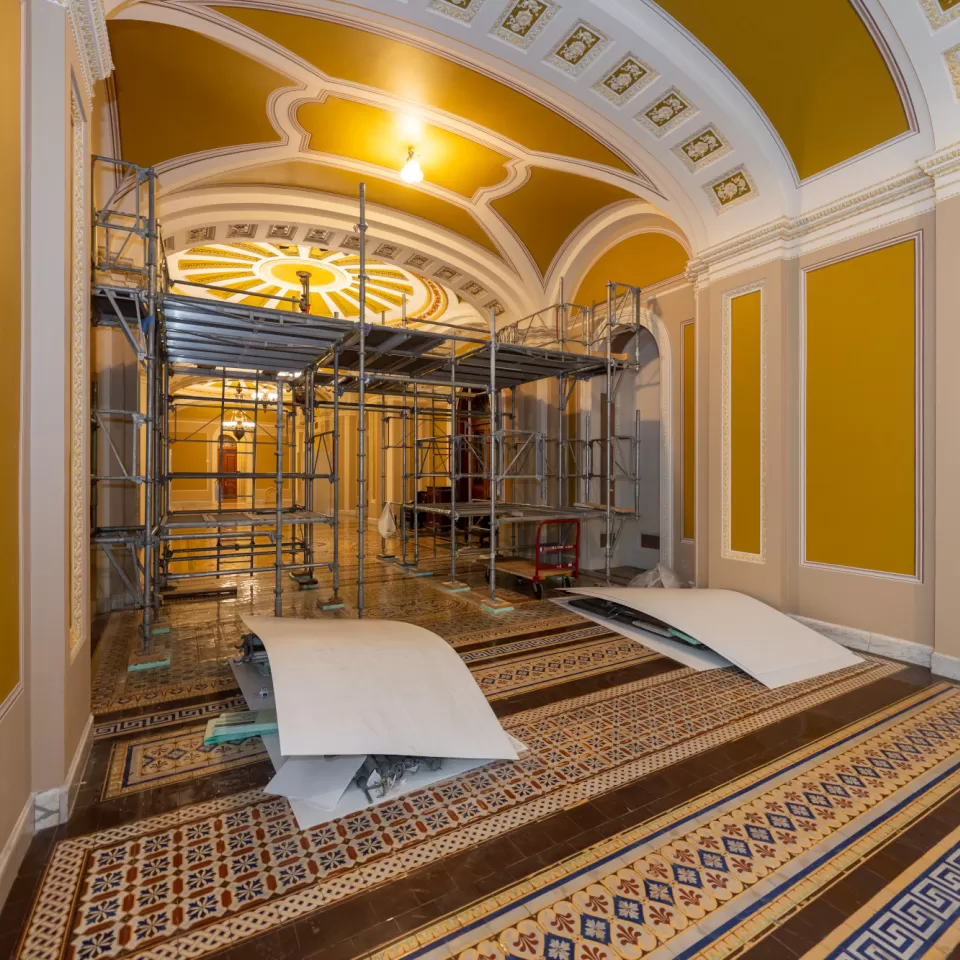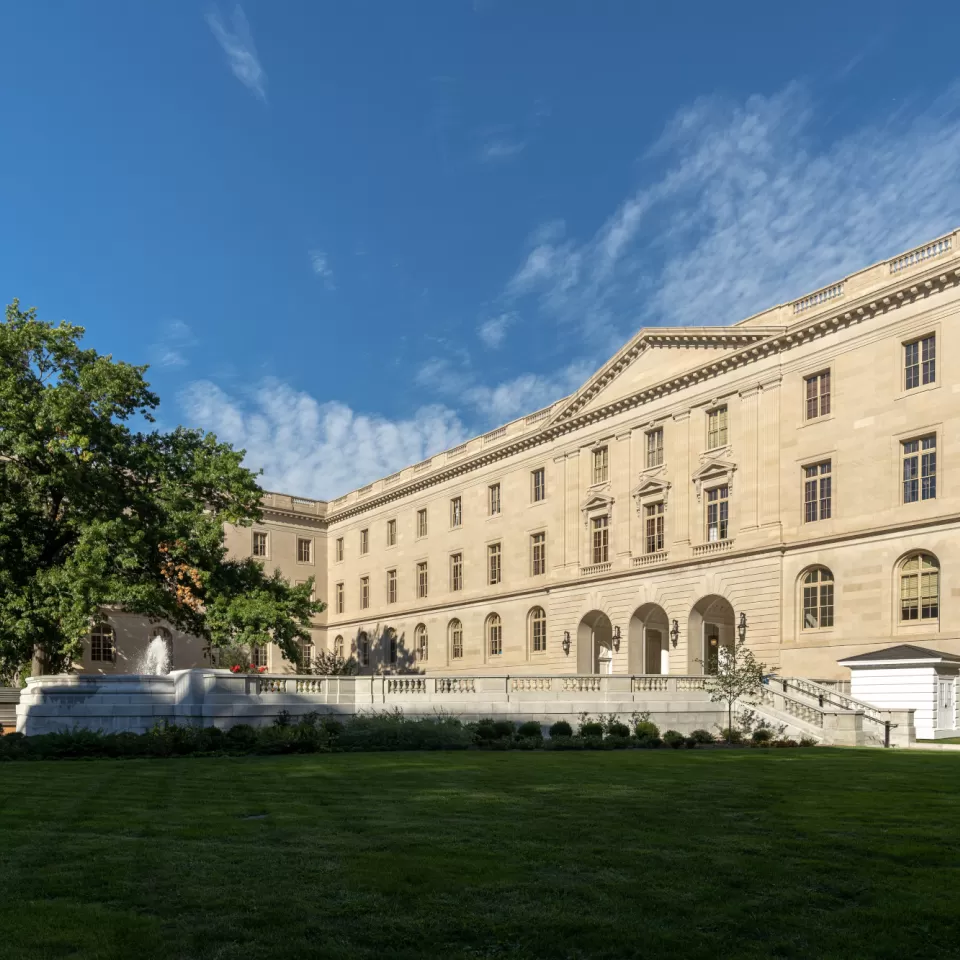Our Stories
Recent Articles
Projects
House Hearing Room Renovation
Rayburn Room 2172 recently underwent renovations that include a refurbished wall-to-wall audiovisual (AV) system, a custom dais and several improved accessibility features.
Projects
A House for All Seasons
More than 140 years later, the Architect of the Capitol's Summerhouse still offers visitors respite. Recent maintenance efforts will help keep the site around for repeat visitors and first timers alike.
Projects
The AOC Never Paints Itself Into a Corner
An in-depth look at the most recent phase of the Capitol Building Paint Analysis and Plaster Repairs project.
Projects
Group Project: The Russell Building Courtyard
The Russell Senate Office Building courtyard was recently restored as a supplement to the Russell Exterior Envelope Project.






Comments
Are there other bronze statues by H M Shrady on the capitol grounds? I am specifically looking for an image of a large moose. Thank you.
Grant was a far greater president than most appreciate. He tried very hard to preserve the gains of freed slaves at a time when corruption in Congress ans among the state Republican parties was almost endemic, and during a period when the Klan and other neo Confederate political organizations were already beginning to raise havoc.
Add new comment